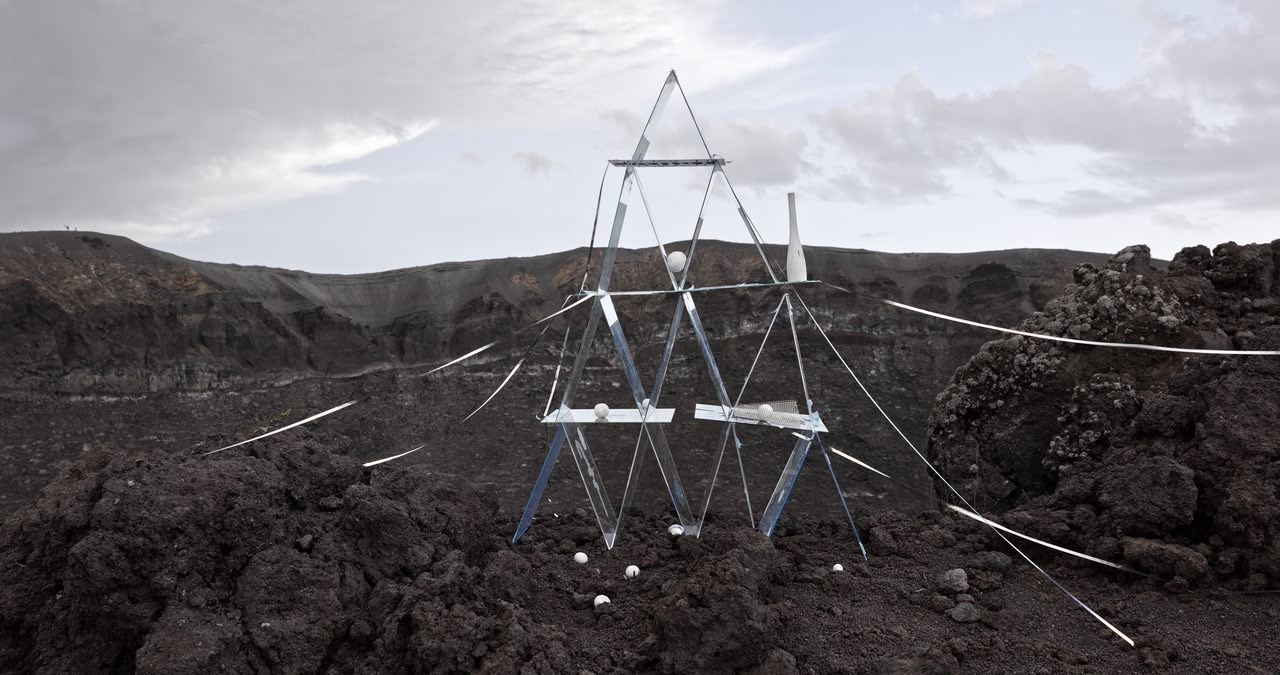In unterschiedlichen Kulturen und Epochen wurden Künstler*innen als Seismograph*innen betrachtet, die fähig sind, zukünftige Strömungen oder Erschütterungen zu erspüren und zu artikulieren. Auch kennen wir Kultstätten und Riten rund um Vulkane, tektonische Risse oder Höhlen, die an eine geologische Zeitdimension erinnern und damit an unsere Verantwortung für zukünftiges Leben.
Seismische Ereignisse wurden lange als naturgegeben verstanden, doch heute gibt es zunehmend von Menschen verursachte Faktoren: Globale Erwärmung, das Schmelzen der Gletscher, Rohstoffabbau, neue Energietechnologien oder Abfallentsorgung. Ob und wie diese multiplen Einflüsse Vulkanausbrüche oder Erdbeben auslösen, wird kontrovers verhandelt.
Impuls-Vorträge, Performance und Publikumsgespräch widmen sich dem Thema mit Beiträgen von: Arno Böhler (Philosoph), Daniel Brandlechner (Literaturwissenschaftler), Nikolaus Gansterer (Künstler), Mariella Greil (Choreografin und Tänzerin), Victor Jaschke (Filmemacher), Peter Kozek (Künstler) und Lucie Strecker (Künstlerin)
PROGRAMM
16 Uhr Begrüßung / Welcome
16:15 Uhr Einführung / Introduction
Lucie Strecker
16:30 Uhr Vortrag / Lecture
Daniel Brandlechner
"The Trouble with Seismographic Practice"
17 Uhr Kommentar / Comment
Nikolaus Gansterer
17:15 Uhr Vortrag / Lecture
Arno Böhler
"The pulsating Heart of the Earth is golden ..."
17:45 Uhr Kommentar / Comment
Mariella Greil, Victor Jaschke, Peter Kozek, Werner Moebius
18 Uhr Q&A
Moderation: Mariella Greil
18:30 Uhr Aperitif
Aperitif im Salon und Filmvorführung in der Ausstellung / Aperitif at the salon and film screening in the exhibition hall
Vorträge in Englischer Sprache, Einführung und Diskussion in Deutsch und Englisch / Lectures in English, introduction and discussion in German and English
ABSTRACTS
Daniel Brandlechner
The Trouble with Seismographic Practice
The seismograph is more than just a scientific instrument; it has become a common practice to liken the arts to a seismograph, registering the subtle vibrations of their time. From modernist writers like Hugo von Hofmannsthal, who used it to capture shifts in perception, to intellectuals like Ernst Jünger, Aby Warburg, Adorno, and Walter Benjamin, who saw it as a tool for diagnosing social change, the idea of the artist as a "human seismograph" has shaped how we understand creativity and crisis to this day. However, this attribution is problematic: the seismographic practice uncritically conflates recording and interpretation and loses epistemic precision. Drawing on Karen Barad’s theory of the apparatus, where the apparatus is part of the phenomenon it records, I propose a fresh perspective on the artist as a seismograph, linking my ideas to the artworks exhibited by Shaken Grounds, which critically engage with the instrumentalization of art through the seismographic practice.
Daniel Brandlechner (Dr. phil.) is a scholar of comparative literature and German studies who studied at the universities of Vienna, Palermo and Bologna. In his dissertation, which he completed in March 2024 at the Department of Comparative Literature at the University of Vienna, he examined how earthquake events are transferred into disaster discourses, using the example of six earthquakes from the 21st century. He has published in journals such as Sprachkunst (on the seismography metaphor in Hugo von Hofmannsthal) and Between (on Dante references in Ai Weiwei's artwork). His first monograph, Seismographies of the Early 21st Century, is forthcoming with De Gruyter.
Arno Böhler
The pulsating Heart of the Earth is golden …
In this lecture, the artist-philosopher Arno Böhler will reflect on the fragility of the Earth’s crust and the tensions between her surface and her deeper inner-bodily layers. If one were to dig deeper and deeper into the Earth, one would finally encounter her core depth: A fiery stream of lava, consisting of extremely hot metals that bind enormous amounts of energy at an astonishing density. It seems that the heart of the Earth, unlike her surface, is not green, brown or blue; rather, her interior glows golden, saffron golden. From this perspective, it seems highly questionable that the Earth–for thousands of years–has been regarded as a stable ground that reliably supports our existence. Seen from the nucleus of her heart, she rather appears as a fiery ball, full of inner turbulences, tensions, tremors and eruptions; a dynamite, which geologically and genealogically provides the earthly conditions of possibility for those who populate its crust. Shaken Grounds–Shifting Skies.
Arno Böhler teaches philosophy at the University of Vienna, Department of Philosophy (faculty member) as well as aesthetics at the University of Music and Performing Arts Vienna. He is supervisor of the Vienna Doctoral School of Philosophy and, together with Susanne Valerie Granzer, they have invented formats as “Philosophy On Stage”, “Arts-based-Philosophy”, “field-performances”, which meanwhile become role models for artistic research and performance philosophy. Currently he also leads an artistic research project on the *Heart*, sponsored by the Austrian Science Fund (FWF; https://doi.org/10.55776/AR822). www.researchcatalogue.net/view/2484805/2765732
Im Rahmen von:
IMAGINE CLIMATE DIGNITY -
